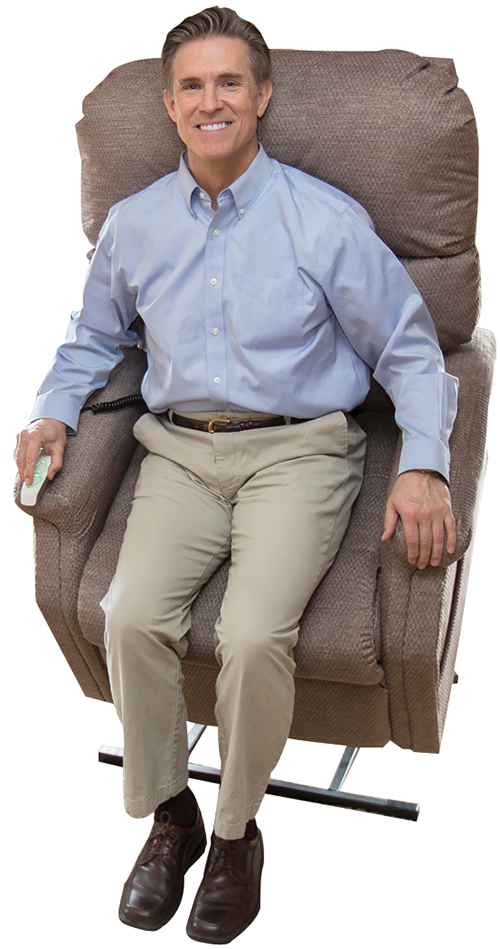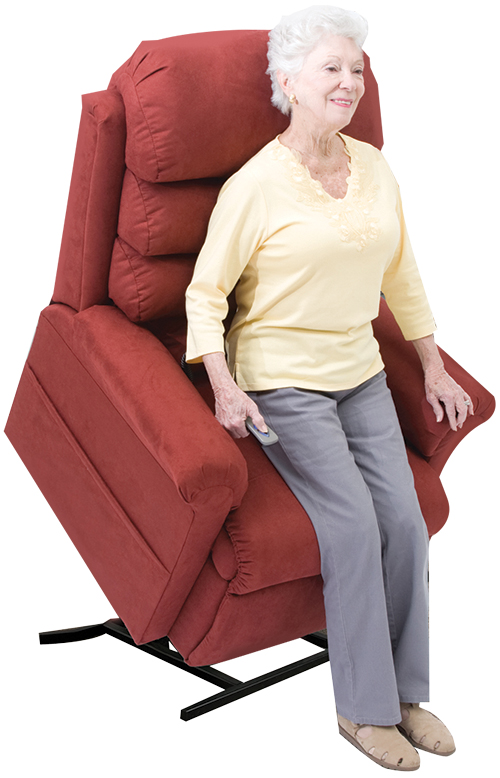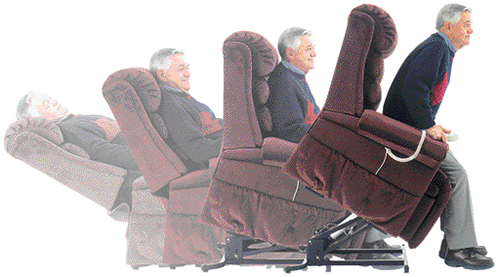The ability to rise from a chair becomes increasingly difficult with muscle weakening and age. Pride lift chairs are an assistive tool because they do much of the lifting from sitting to standing using an electric motor. This allows you to stand from a sitting position with very little effort. In order to do this in the most efficient way possible, the chair must be appropriately sized for you. This tool will help you determine which chair is most suitable as well as how to choose the right size chair.
Elegance Collection
The Elegance Collection is a 3-position chaise lounger. The 3 position allows for the chair to go into full recline. The chair can be raised, the feet can be elevated, and the back and feet can go into full recline. Weight cap is 375lbs. For those 5’4” to 6’0”, or 5’9” to 6’2” for the 570-L, 5’3” or less for the 570-S. Elegance lift chairs feature a split, biscuit, and pillow back.

Heritage Collection
The Heritage Collection is another 3-position chaise lounger. These chairs can also go into full recline. Most of the weight caps for these chairs are 375lbs as well, but two heavy duty options (500lb and 600lb) are also available. The petite and small sizes are for 5’3” and below, while the other chairs are from 5’4” to 6’2”. All Heritage lift chairs feature a button back.
Classic Collection
The Classic Collection includes both 2 and 3-position recliners. Suitable for those who are 5’2” to 6’0”. The lowest cost of all the collections and features a button back and a split back.
Specialty Collection
The Specialty collection offers chairs that are infinite position, zero gravity, and trendelenburg capable. This collection offers the greatest range in features. 300-375 lb weight cap. Certain chairs offer special features such as removable arms for easy transfer, partial recline to decrease wall space and footrest extensions for individuals with long legs. Pillow, split, and waterfall backs are available for this collection. The petite and small sizes are for 5’3” and below, while the other chairs are from 5’4” to 6’2”.
How to choose the right size lift chair
- Weight Capacity
- Floor to Top of Seat Height
- Seat Depth
- Seat Width

Lift chairs have different weight capacities due to the size and style of our lift chair models. The first step is to obtain your weight to determine which model is capable of lifting you safely. If you are near one of these limits, we highly recommend the larger capacity chair. You do not want to exceed these limits. Not only is it unsafe, but it will also void all warranties.
To obtain the next three measurements, you must think of yourself in a seated position. Your body will be flexed at the knee and at the base of your back. Your hips will spread wider across the seat. To provide the most comfort, we recommend these measurements be made accordingly.
The floor to top of seat height should be measured from the bottom of your foot to the top of the back of the knee. You should be able to comfortably place your feet on the floor while in a seated position. If the floor to seat height is too tall, this will cause your feet to hang above the floor. If the floor to seat height is too small, your knees will be uncomfortably elevated. This also affects the seat depth and leg extension.
The seat depth should be measured from the bottom of the back of the knee to the base of your back. If you have to "squirm" to the back of the seat, this seat depth is too long for you; you will need a smaller seat depth. Too small of a seat depth will not offer enough thigh support and create a shorter leg extension so that your feet hang off the footboard when reclined.
Seat width should be measured across your hips when seated. Remember that when you actually sit down, your hips spread wider than they are in a standing position. Too wide of an area may create posture problems (leaning to one side). Too small will cause you to squeeze into a restrictive area. Over time, this will cause undue stress on the arms and create eventual problems with the frame
Lift chairs are the ideal solution for individuals that have difficulty getting up from a chair, or cannot get up without assistance.
Lift Chairs provide a full lift into a standing position.



